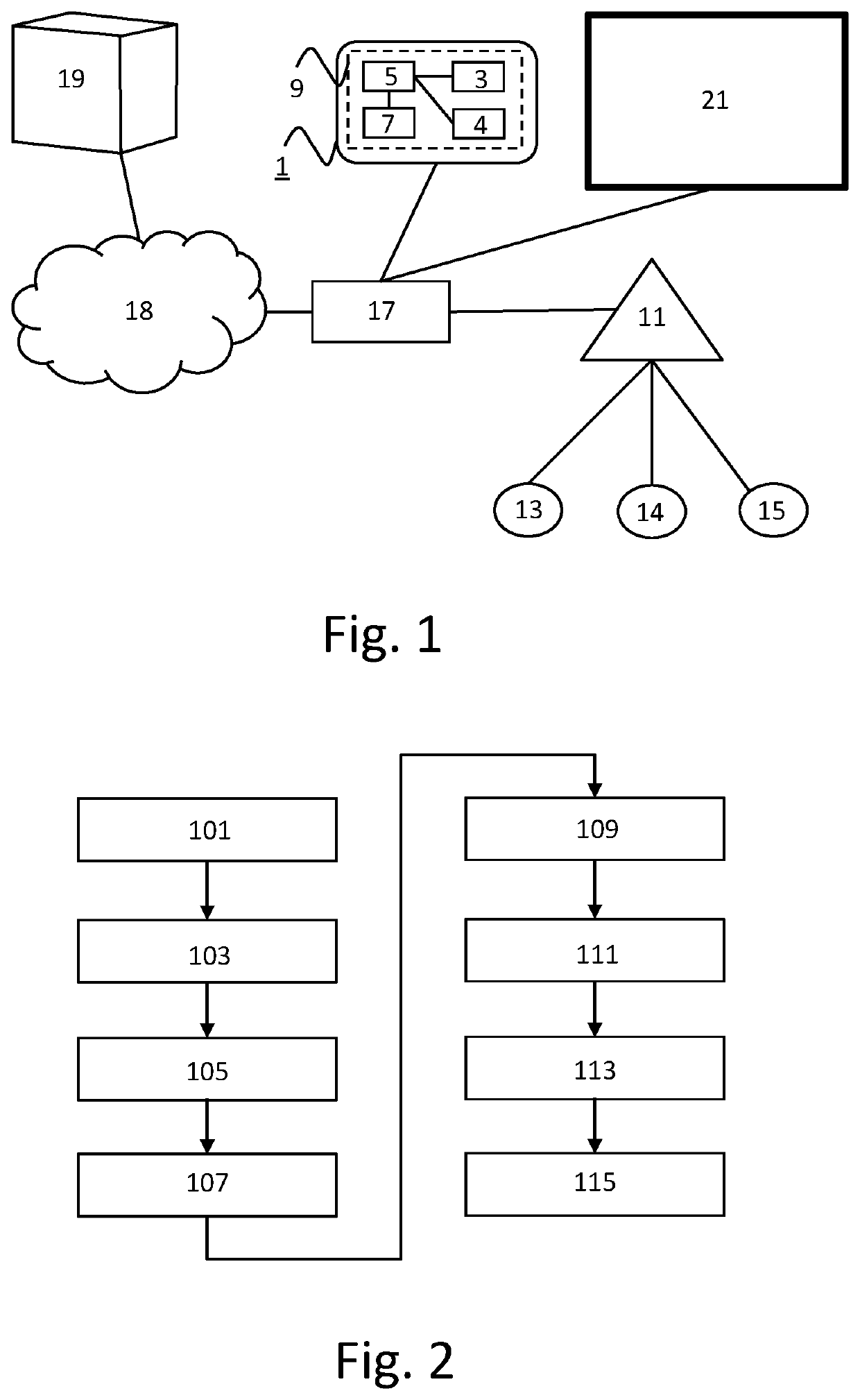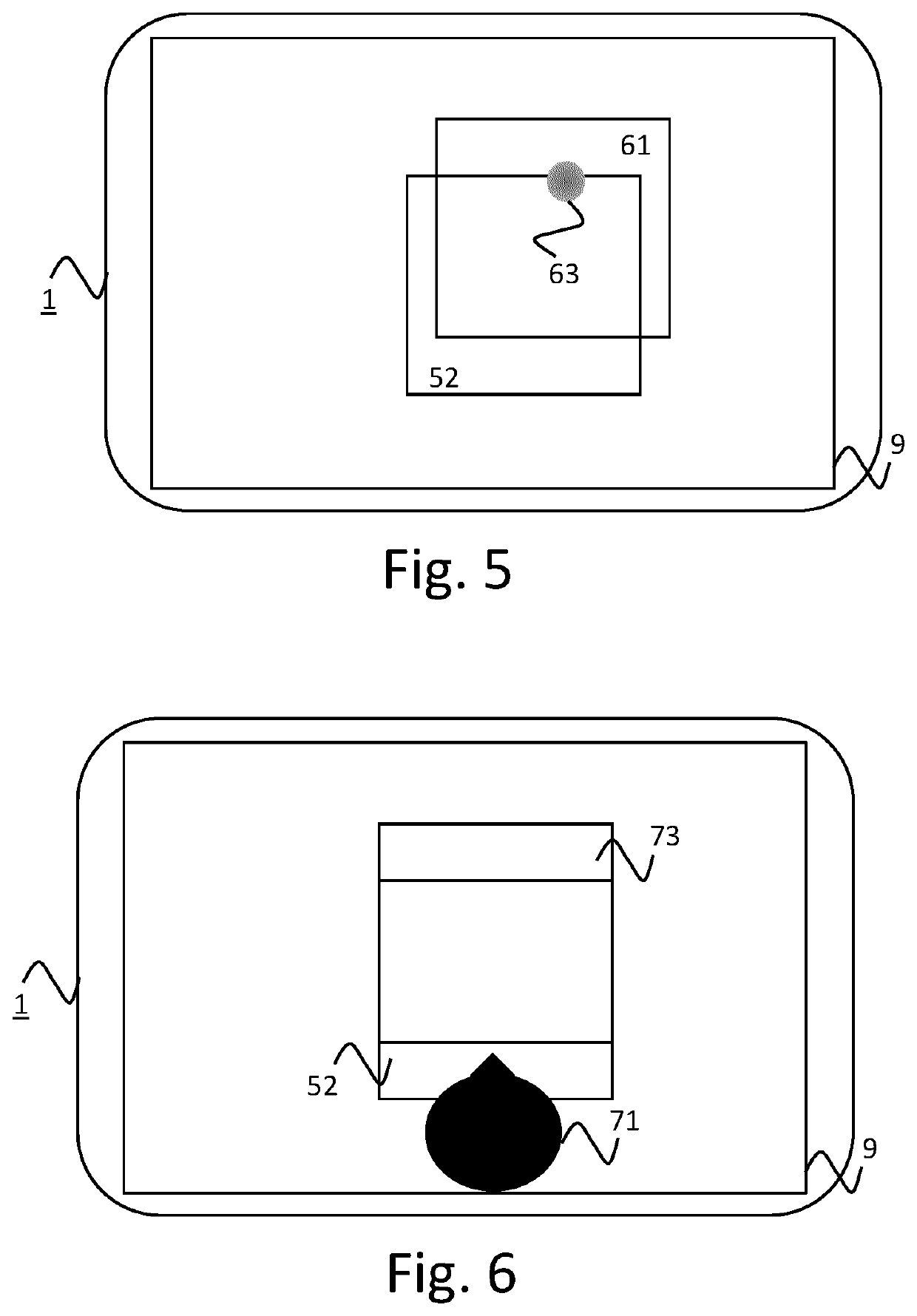Selecting an image analysis area based on a comparison of dynamicity levels
- Summary
- Abstract
- Description
- Claims
- Application Information
AI Technical Summary
Benefits of technology
Problems solved by technology
Method used
Image
Examples
first embodiment
[0062]the method of determining image characteristics from an analysis area in video content is shown in FIG. 2. The image characteristics are used to determine one or more light effects to be rendered on one or more lighting devices while the video content is rendered on a display device. A step 101 comprises obtaining video frames. A step 103 comprises determining a first level of dynamicity in the video frames. A step 105 comprises determining a second level of dynamicity in each of a plurality of analysis areas in the video frames. A step 107 comprises comparing each of the second dynamicity levels with the first dynamicity level.
[0063]A step 109 comprises selecting a subset of the analysis areas based on the comparisons. A step 111 comprises determining image characteristics from the subset of analysis areas in the video content. A step 113 comprises determining one or more light effects based on the image characteristics. A step 115 comprises controlling the one or more lighti...
second embodiment
[0078]the method of determining image characteristics from an analysis area in video content is shown in FIG. 9. In the embodiment of FIG. 9, step 103 of FIG. 3 comprises a sub step 131, step 105 of FIG. 3 comprises a sub step 133 and step 109 of FIG. 3 comprises a sub step 135. The first dynamicity level determined in step 131 represents an overall dynamicity of the video frames and is determined per pixel or per region of pixels.
[0079]In steps 131 and 133, the first level of dynamicity is determined in the video frames and the second level of dynamicity is determined in each of a plurality of analysis areas in the video frames, respectively. In steps 131 and 133, the first dynamicity level and / or the second dynamicity levels are determined by comparing successive ones of the video frames.
[0080]Steps 131 and 133 comprise determining chromaticity and / or brightness differences in these successive video frames, specifically cumulative frame differences. In these steps, the difference ...
third embodiment
[0082]the method of determining image characteristics from an analysis area in video content is shown in FIG. 10. In the embodiment of FIG. 10, step 103 of FIG. 3 comprises a sub step 141 and step 105 of FIG. 3 comprises a sub step 143. The first dynamicity level determined in step 141 represents an overall dynamicity of the video frames and is determined per pixel or per region of pixels.
[0083]In steps 141 and 143, the first level of dynamicity is determined in the video frames and the second level of dynamicity is determined in each of a plurality of analysis areas in the video frames, respectively. In steps 141 and 143, the first dynamicity level and / or the second dynamicity levels are determined by comparing successive ones of the video frames.
[0084]Steps 141 and 143 comprise detecting edges in each of the successive ones of the video frames and determining changes in the detected edges between the successive ones of the video frames. Steps 141 and 143 are like steps 131 and 133...
PUM
 Login to View More
Login to View More Abstract
Description
Claims
Application Information
 Login to View More
Login to View More - R&D
- Intellectual Property
- Life Sciences
- Materials
- Tech Scout
- Unparalleled Data Quality
- Higher Quality Content
- 60% Fewer Hallucinations
Browse by: Latest US Patents, China's latest patents, Technical Efficacy Thesaurus, Application Domain, Technology Topic, Popular Technical Reports.
© 2025 PatSnap. All rights reserved.Legal|Privacy policy|Modern Slavery Act Transparency Statement|Sitemap|About US| Contact US: help@patsnap.com



